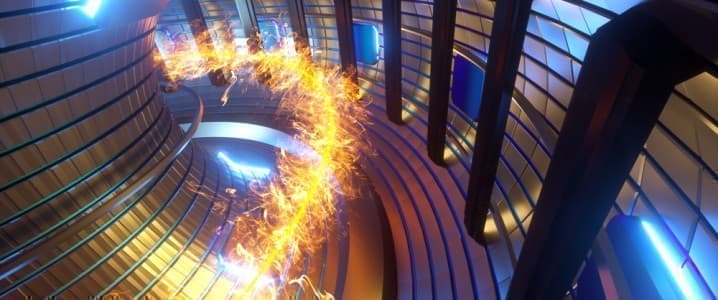“When Will Nuclear Fusion Put Oil And Gas Out Of Business”? a Forbes headline asked late last year. While there have been major breakthroughs in achieving ignition in the last year which have tipped the nuclear fusion scales from pipe dream to possibility, the article concluded that we likely won’t see a switch to commercialized nuclear fusion in our lifetimes. But it’s closer to reality than ever before, and naysayers have increasingly had to walk back their nuclear fusion doubts in recent months and years. Breakthroughs keep piling up, technological advances are occurring more frequently in nuclear fusion experiments around the world, and the timeline for commercial fusion keeps getting revised to be shorter and shorter.
Around the same time the Forbes article was published, another major advance in nuclear fusion technology was logged in a Chinese laboratory. The Hefei-based Experimental Advanced Superconducting Tokamak (EAST) project announced just this week, after a thorough peer review, that last month the scientists working at the reactor “discovered a never-before-seen mode of plasma operation that could lead to more stable and effective generation of nuclear fusion energy.”
By heating up plasma-charged gas made of free-moving electrons and hydrogen ions to a whopping 70 million degrees Celsius through the use of magnetic fields, the scientists unlocked a new mode of plasma operation with enormous potential impact due. The ‘super I-mode’ achieved high energy confinement in both deep plasma and at the plasma edge. The mode’s ability to reduce loss of heat at the plasma’s edge is particularly exciting, as it has major implications for effectively and efficiently harnessing nuclear power production. As such, the breakthrough “exhibits great potential” for the mode’s use in the world’s largest fusion reactor – the International Thermonuclear Experimental Reactor (ITER) – which is currently under construction in France.
“The significance of the EAST experiments is that they have demonstrated, for the first time, that tokamak plasmas … can be sustained and controlled for very long pulses – more than 1,000 seconds, which is similar to the long pulses ITER aims for in the long term,” Richard Pitts, a plasma operations specialist at ITER was quoted by the South China Morning Post. “There are all kinds of issues associated with very long pulse operation, and it’s very comforting for us at ITER to see that this has been achieved, even if it is on a much smaller device.”
This breakthrough comes on the heels of a massive discovery made by researchers at the National Ignition Facility (NIF) in California, who finally broke through nuclear fusion’s most significant barrier to date: creating net positive energy from the reaction. The now legendary experiment in California used lasers to focus 2.05 megajoules of light onto a tiny quantity of fusion fuel, sparking an explosion that ultimately produced 3.15 MJ of energy, which equates to about three sticks of dynamite.
Typically, creating nuclear fusion here on Earth has required so much energy that the actual fusion reaction didn’t produce enough to break even. On the surface of the sun, fusion takes place naturally, but achieving those kinds of temperatures on Earth is no easy feat. ITER, which is the most promising and large-scale nuclear fusion project in the world, is currently vastly over budget and behind schedule.
Once humans hack it, however, commercial-scale nuclear fusion would produce essentially limitless clean energy, presenting a silver bullet solution to the climate crisis, as well as global energy security. This is why the advances being made in fusion experiments throughout the world are so exciting, albeit very preliminary in the scientific process needed to achieve scalable commercial fusion.
By Haley Zaremba for Oilprice.com
More Top Reads From Oilprice.com:
- Oil Prices Climb Despite Demand Uncertainty
- China’s Oil Demand Is Set To Hit A Record High In 2023
- Why Oil’s 7-Month Downturn May Be About To Reverse

















